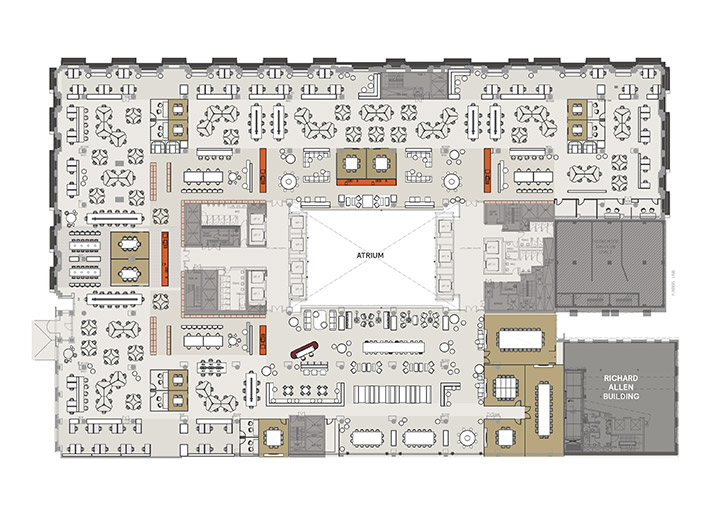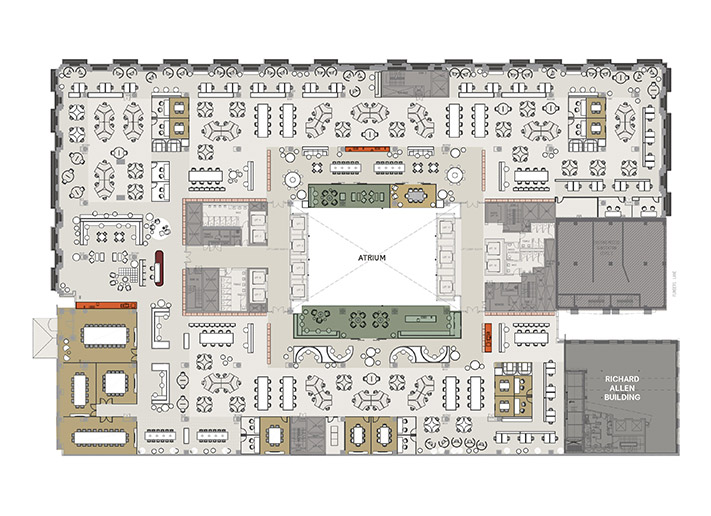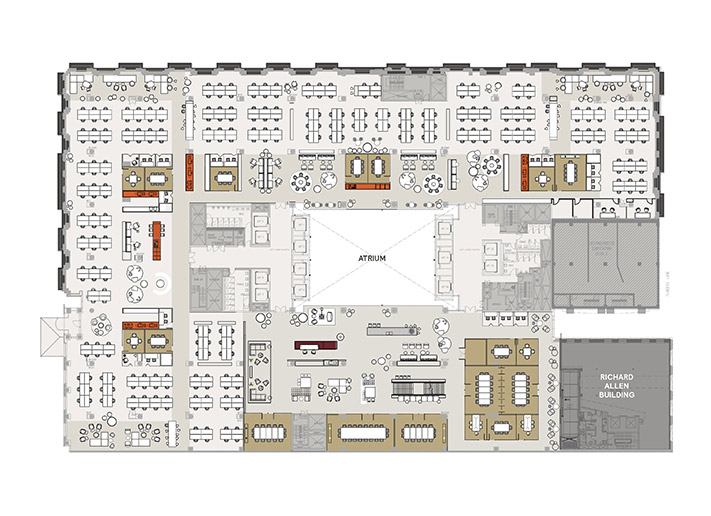Agile
Profile Series – Q&A with Jeffery Copolov Bates Smart
19 December 2017
We spoke to Bates Smart Director, Jeffery Copolov, about his role and the challenges he faced as the Interior Design Director for the T&G Building refurbishment.
Bates Smart is a multidisciplinary design firm delivering architecture, interior design, urban design and strategic services across Australia, with a staff of over 250 in studios in Melbourne and Sydney. Pembroke commissioned Bates Smart to embrace our vision to transform the ground plane of the T&G Building with a dynamic new entrance experience including an amenity rich atrium, as well as upgrades to the office floors and brand new end-of-trip facilities.
Once complete, Pembroke Real Estate together with Bates Smart will deliver a world class office environment that actively promotes a sense of community and tenant wellbeing, supports high performance and enriches the city of Melbourne.

Read more about Jeffery’s role in the T&G Building:
1. What is your position and role in the refurbishment of the T&G Building?
I’m the Interior Design Director at Bates Smart and for the T&G Building project I provided guidance for a collaborative and extremely capable team of interior architects and interior specialists.
2. How does the T&G Building compare to other projects you’ve worked on?
A building refurbishment project is always highly complex, and in many ways more difficult task, than a greenfield site. The T&G Building is one of the largest and most complex refurbishments that Bates Smart has worked on in recent times. Although we have completed many refurbishment projects, they tend to be with buildings from a designated period and they often have a more simplified set of components.
The T&G Building has a long history and is an amalgam of a number of historical refurbishments over the years. This means that the building has a complex architectural legacy – none of which is entirely pure. In addition, the building has a series of floor plates with quite complex circulation patterns and a variety of architectural expressions.
3. What makes the T&G Building a significant project to you?
This might sound provocative, but I think that most building “upgrades” are building downgrades, in that the work often leaves the initial architectural integrity of the building compromised. With this in mind, when approaching the T&G Building, with its diversity of historical developments, we were very conscious of carefully respecting the past, yet still giving the building a new life into the future.
The most environmentally sensitive thing you can do is to retain old buildings and breathe new life into them. This is an extremely important building culturally for Melbourne.
4. What makes this a significant project for Bates Smart?
Bates Smart continues to be at the forefront of contemporary commercial office design and this building’s interior was about creating a future generation workplace environment in a building over 100 years old.
We understand architecture, modern workplace design and we are used to dealing with complex projects and fine grain details.
5. What has been the most challenging element of this project?
It’s a significant project and we had the responsibility to handle it carefully.
A big challenge was how to create clarity on the ground plane. There were all sorts of obstacles; conflicting levels and confusing circulation routes. We created a new entranceway onto Flinders Lane, encouraging public circulation. This is a vital entrance. Flinders Lane has changed dramatically since the 1990s and is now worthy of its own address.
We have also created a new legibility within the volumetric spaces and plans. We had to negotiate the removal of columns and these structural changes can be very challenging. We have also designed a more defined entranceway onto Collins Street, and have relocated the entry for cars onto Russell Street, both of which also involved structural modification.
We have also made the entrances more inclusive so that they accommodate everyone and meet all the DDA requirements.
The project, and specifically the internal atrium, has been designed with the knowledge that it can be adapted for future needs. This gives the project a longer lifespan should tenants require it.
6. What is your favourite feature of the T&G Building?
It’s an outstanding building on a prominent corner in Melbourne. It has a very beautiful façade and one of my favourite gems is the wonderful mural by Napier Wallace.
7. What are you most looking forward to seeing upon completion, in terms of final building features?
I’m looking forward to all these ideas coming together. It will breathe new life into one of Melbourne’s most significant and beautiful buildings.
We are also excited about the new vistas through the building, as we have made a walkable route from Federation Square via Hosier Lane to Collins Street and Scots’ Church.


